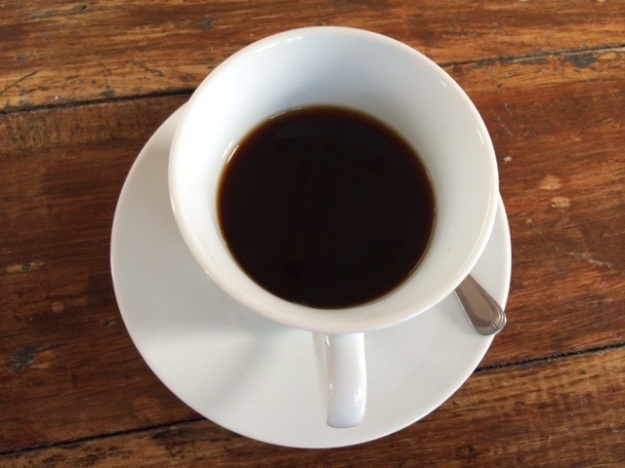 James Bond fans: did you know that this suave British Secret Service agent was born in Jamaica? Literally.
James Bond fans: did you know that this suave British Secret Service agent was born in Jamaica? Literally.
Writer Ian Fleming, who created Bond in 1953 and featured him in 14 novels and a collection of short stories, first came to Jamaica during World War II for a conference and fell in love with the country. He made a promise to himself to return and after the war he went back and acquired 19 acres of property in Oracabessa Bay on Jamaica’s north coast for building a home.

It was in this basic bungalow retreat called GoldenEye where Fleming would begin to pen “Casino Royale,” his first book introducing Bond during his winter stays. He went on to write every single Bond thriller, every January and February he was there. (Bonus fact: The spy’s name is said to come from a reference book on birds by James Bond, an ornithologist.)
Several years after Fleming’s death, GoldenEye was almost sold to reggae legend Bob Marley, who pulled out of buying it. It was bought in 1976 by Island Records mogul Chris Blackwell and over time turned the property into a world-class resort while still keeping Fleming’s old home.
 Belonging to the Island Outpost collection, GoldenEye now consists of 11 one and two-bedrooms villas located directly on Low Cay Beach or on a seawater lagoon, six lagoon cottages, and one oceanfront villa. Fleming’s former jaunt is still here but now called The Fleming Villa. Rightfully so, it’s marketed as a separate area on the property.
Belonging to the Island Outpost collection, GoldenEye now consists of 11 one and two-bedrooms villas located directly on Low Cay Beach or on a seawater lagoon, six lagoon cottages, and one oceanfront villa. Fleming’s former jaunt is still here but now called The Fleming Villa. Rightfully so, it’s marketed as a separate area on the property.
Once you see, you’ll understand why. It’s a place onto itself.
 Far more reclusive and shaded that the other accommodations, the Fleming Villa has its private swimming pool, tropical gardens and a full-time dedicated staff. In the main house, there are five individual bedrooms such as the king-sized 007 Bedroom, which has Fleming’s writing desk; dining/living room area; kitchen and bar; and a private bathroom with an outdoor shower. Up to 10 guests can stay here. A delightful patio area provides a nice lookout over the surrounding beach. There is also a smaller, separate cottage named “The Sweet Spot.”
Far more reclusive and shaded that the other accommodations, the Fleming Villa has its private swimming pool, tropical gardens and a full-time dedicated staff. In the main house, there are five individual bedrooms such as the king-sized 007 Bedroom, which has Fleming’s writing desk; dining/living room area; kitchen and bar; and a private bathroom with an outdoor shower. Up to 10 guests can stay here. A delightful patio area provides a nice lookout over the surrounding beach. There is also a smaller, separate cottage named “The Sweet Spot.”
Fleming’s detached garage still stands but has been turned into an entertainment room that overlooks the patio and pool area. And James Bond’s presence – movie versions of his books, “Dr. No,” “Live and Let Die” and “The Man with The Golden Gun,” have scenes filmed in Jamaica – is still felt throughout GoldenEye. Readers will find Fleming’s James Bond books placed in bookcases or nightstands inside the various accommodations as well as Fleming Villa. Upon arrival, spot a collection of Bond-related photographs on the walls of a building near the main entrance.
 Spa services are offered at FieldSpa, a lagoon-based cottage, with private and open-air treatment rooms. Spa services include cleansing treatments called bush baths as well as massages, salt scrubs, facials, and herbal wraps.
Spa services are offered at FieldSpa, a lagoon-based cottage, with private and open-air treatment rooms. Spa services include cleansing treatments called bush baths as well as massages, salt scrubs, facials, and herbal wraps.
As for dining, the Bizot Bar provides low-key dining options set near a fresh water swimming pool and the western part of the beach. Breakfast and lunch is served here. Choices include Jamaican fare like saltfish and jerk chicken with rice as well as continental burgers, pasta, and salads.
Its opposite option is The Gazebo. This tree-house style lounge and restaurant provides a bit of a nightlife scene with some international flare. Fine dining dishes include grilled lobster tail and seasoned roast lamb. Its open atmosphere also sets up as a cocktail lounge area where perhaps you might order that martini. Shaken not stirred.
Getting Here: GoldenEye is located 20 minutes east of Ocho Rios. It is a 90-minute drive from Montego Bay Airport and an eight-minute drive from Ian Fleming International Airport (private aviation) in Boscobel, Saint Mary Parish.














